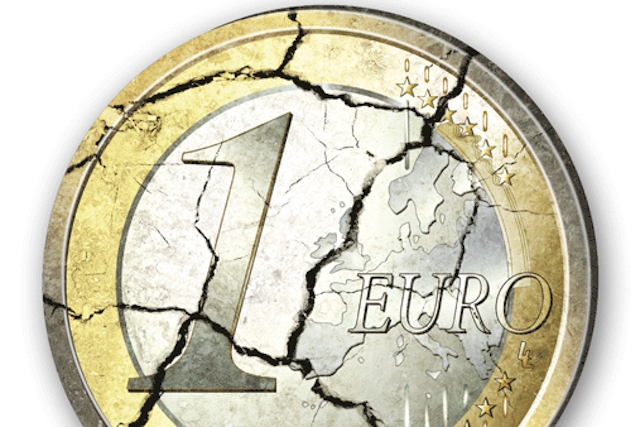On Thursday, the European Central bank announced cuts to three of its benchmark interest rates. This is nothing unusual since the global financial crisis began. We are now accustomed to desperate central bank responses. Interest rates have been falling for decades, and the trend continues. What is unusual—unprecedented for a major central bank—is to lower the deposit rate below zero.
A negative deposit rate means that when a bank keeps extra cash on account at the central bank, it pays the central bank a percentage. It’s like telling the banks that having cash is a privilege, for which they must pay. If it sounds pretty crazy, that’s because it is. First, let’s look at what the ECB says it will do. Then we can dive in and see the likely outcome.

Mario Draghi, President of the ECB, said, “the measures will contribute to a return of inflation rates to levels closer to 2%.” The central bank has been talking a lot about the problem of deflation, by which it means falling prices. The ECB hopes to avoid this fate worse than death, by pushing more euros into circulation. It actually wants prices to relentlessly rise, for salaries to relentlessly lose purchasing power, and for savings to relentlessly erode.
With fiat money, prices rise. This is especially hurtful to people who are struggling to afford food and shelter. Pushing up the cost of living does no good to anyone, but harms the poor most of all. Only a central banker could truly love inflation.
By cutting the rate of interest charged to banks when they borrow, the ECB gives them an incentive to lend more. By making banks pay to park their idle cash, the ECB gives them a disincentive to stay safe by not lending. More money in the economy is supposed to lead to higher prices and a lower euro, which are believed to help the economy.
It’s not going to happen. To understand why not, let’s use Deutsche Bank as an example.
This bank has about €16B in cash. Suppose it lends out a billion to Volkswagen to help finance the Scania acquisition. Volkswagen pays the money to Scania shareholders, but they immediately deposit the money in banks, including Deutsche Bank. Assuming Deutsche Bank isn’t losing market share, the same amount of cash ends up back where it started. Deutsche gets it back, and parks it at the ECB again. It can’t avoid paying that negative deposit rate.
Cash never leaves the banking system. It is a closed loop, with money transferring from one party to the next, but always remaining in the custody of a bank. Lending does not avoid the need to deposit cash at the ECB, or in the US, at the Federal Reserve.
There is a way for banks to reduce their deposits at the ECB. They can buy government bonds and bills from the ECB. The ECB, being the central bank, has no need to deposit the euros in a commercial bank. If extra cash becomes a hot potato that no commercial bank wants to hold, they can get rid of it by trading it for government bonds.
The actual effect of this new ECB policy won’t be much of an increase in business lending or consumer prices. The result will be even lower interest rates on government bonds. Before this announcement, the yield on the 10-year Irish government bond was lower than that on the 10-year US government bond. Spain’s bond is not far behind. Rates will fall further under this new ECB policy, enabling Europe’s insolvent governments to borrow even more money.
The ECB has significant political challenges that prevent it from brazenly buying trillions of government bonds the way the Fed has been doing for years in the U.S. This new scheme will achieve the same result by different means.
See more for


















